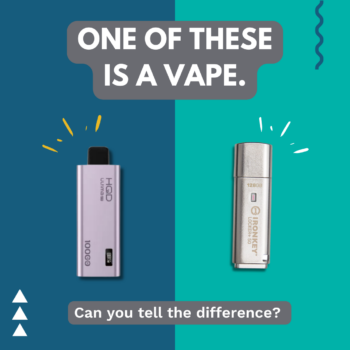Safer or sneaky?
Vaping is when you breathe in and exhale vapor with nicotine and flavors using a special device. The vapor is produced by heating a liquid solution, which can include nicotine salts (nicotine mixed with acid), synthetic nicotine alternatives, and sometimes traditional e-juice. These devices go by many names including e-cigarettes, smokeless cigarettes, vaporizers, vape pens, vapes, mods, tanks, cigalikes, JUUL, e-hookah, hookah pens, and more.
